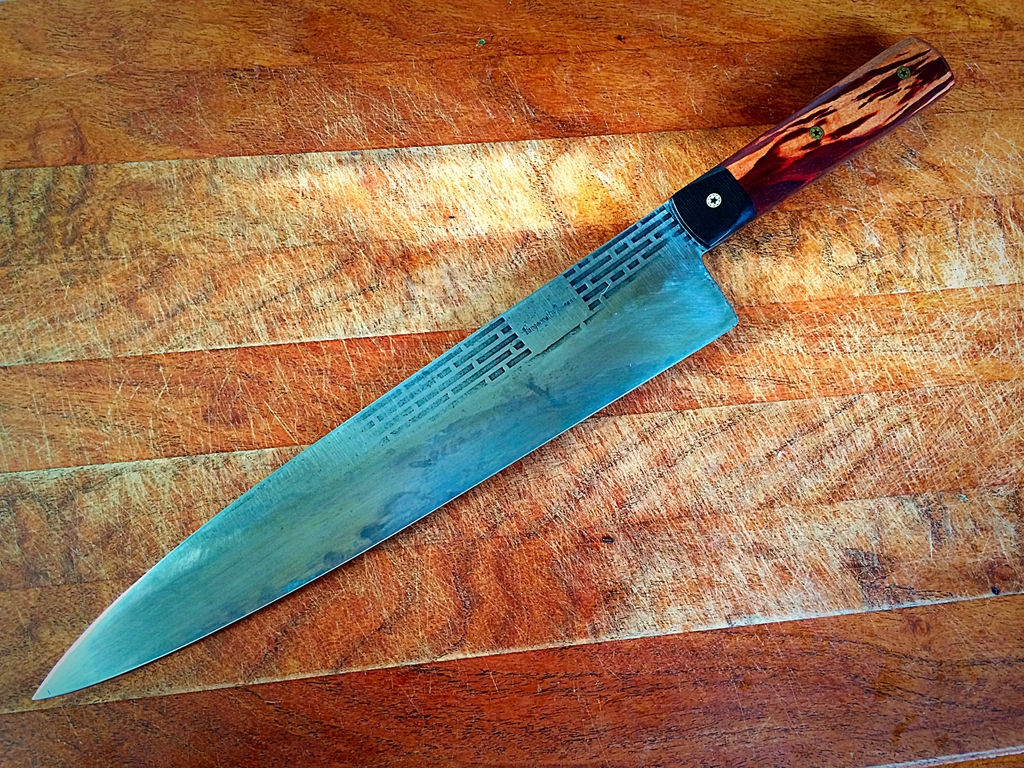
I thought it might be fun to take on one of these Forgecraft refurbishing projects after seeing some amazing ones here. My first goal was to significantly thin the knife. I looked to the Masamoto KS' choil for reference. Since I live in an apartment, I had to do all of my thinning by hand. This took three thinning sessions. At first, I was using the Gesshin 220 pink brick as my main abrasive. However, I made the most progress in my last thinning session with 40/60/80 wet-dry sandpaper with adhesive backing stuck on a slab of marble I usually use for leatherworking.

I took the blade surface up to 1500 grit and polished with green compound on a strop. I realize that there are many scratch marks and other imperfections. But by hour 4, I didn't care too much. Here's a comparison with a Masamoto KS (after thinning session 2 and session 3, respectively; KS on the left and Forgecraft on the right):


And finally, some progression photos:



This took so many hours, and I am so happy with how it cuts now. I've been thinking of doing a rehandle with a wa handle next. Or perhaps I will make a leather saya for it first.










